Tantalizing Turtles Tutorial
Turtles are slow, unseen by people most of the year and often trivialized in cartoons, but “turtles provoke a sense of wonder and amazement,” said Dr. Matt Close who gave a Zoom presentation to 67 enthusiasts on May 15, 2024.
Dr. Close is Associate Professor in Radford University’s Biology Department and treasurer of the Virginia Herpetological Society.
Here are a few highlights from his “turtle tutorial.”
Virginia has 25 species and subspecies of turtles. Visit https://www.virginiaherpetologicalsociety.com/reptiles/turtles/index.html to learn about the different species.
Turtles are reptiles that have been on Earth for 220 million years and have largely not changed during that time. Most have an upper shell called a carapace with keratin scutes and a lower shell called a plastron, a characteristic that makes them unique. Turtles’ shells have unique patterns that can enable observers to identify an individual turtle throughout the animal’s life. Turtles do not shed their shells.
They are ectothermic or cold blooded and bask and move to sunny spots to raise their body temperature.
Turtles are ecologically important because they help keep the ecosystem in balance by eating slugs, insects and algae. Birds, fish and raccoons eat turtle eggs.
Virginia maintains a list of Species of Greatest Conservation Need, with tier I indicating the highest need for protection of the animal and its habitat, down to tier IV, a classification indicating a need for some habitat protection or more information. Seven turtles are listed on tier I. See https://dwr.virginia.gov/wildlife/wildlife-action-plan/species-of-greatest-conservation-need/.
The major threat to turtles is habitat loss and fragmentation. Other threats include hits by vehicles, illegal sales, collecting them for pets and diseases.
Thanks to the Friends of Little Hunting Creek and the Friends of Mason Neck State Park for cosponsoring the program. To hear and watch a recording of the talk, click here.
Here are some examples of turtles found in Virginia. Thanks to John White and the Virginia Herpetology Society for their good work and these photos. All photos © John White - Virginia Herpetological Society.
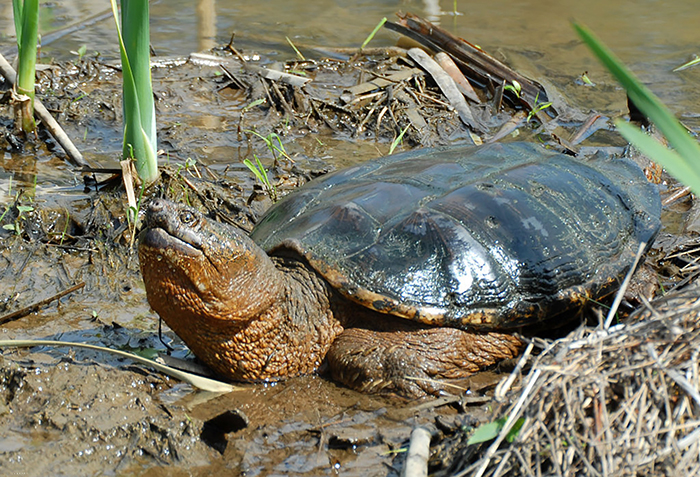 |
| Snapping turtle (Chelydra serpentina) |
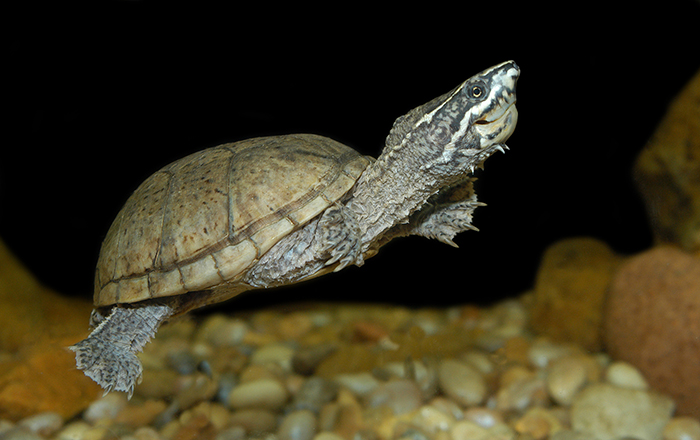 |
| Eastern musk turtle (Sternotherus odoratus) |
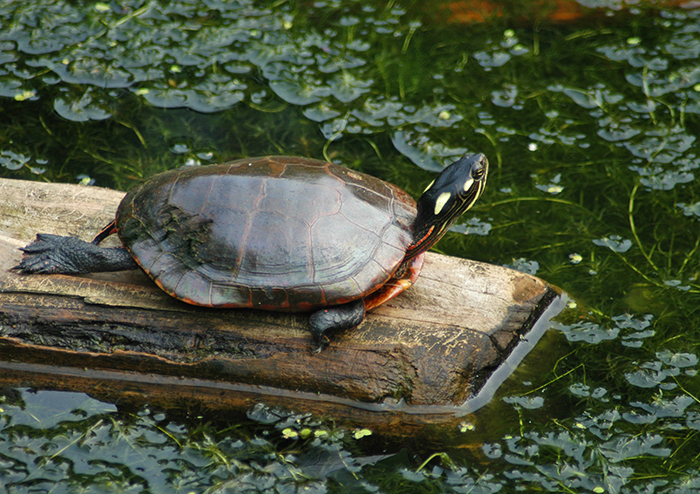 |
| Eastern painted turtle (Chrysemys picta picta) |
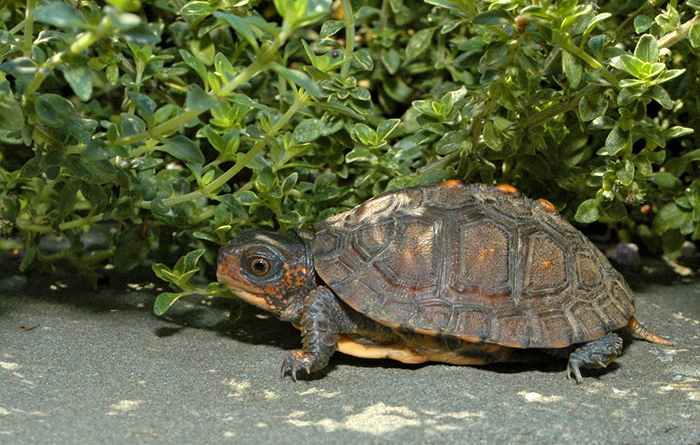 |
| Juvenile woodland box turtle (Terrapene carolina carolina) |
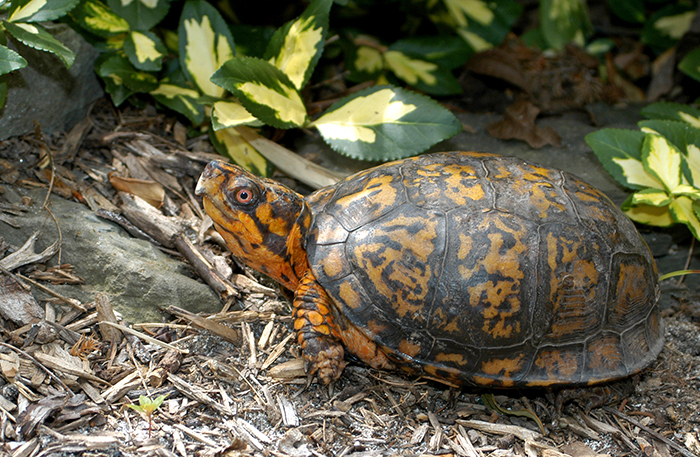 |
| Adult woodland box turtle (Terrapene carolina carolina) |
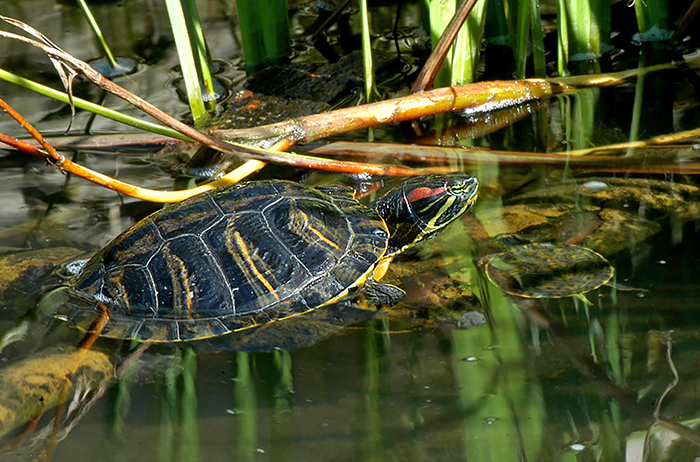 |
| Red-eared slider (Trachemys scripta elegans) |
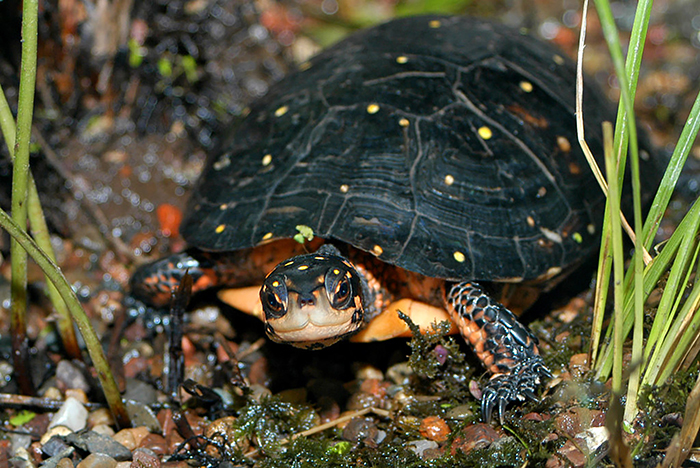 |
| Spotted turtle (Clemmys guttata) |
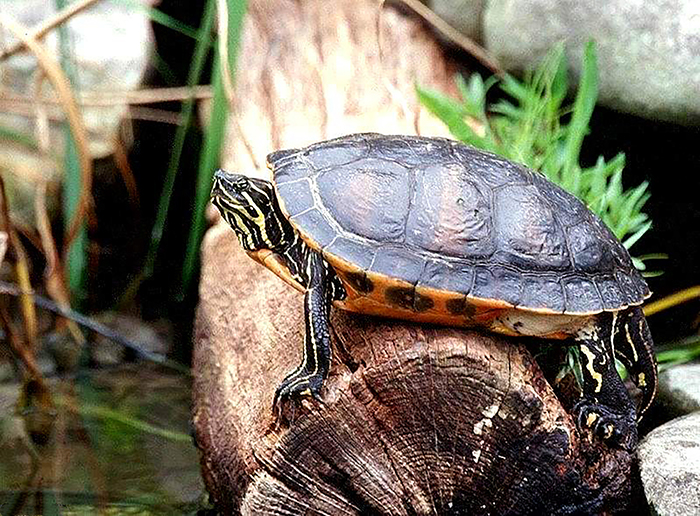 |
| Northern red-bellied cooter (Pseudemys rubriventris) |

 Friends of Dyke Marsh, Inc. is a non-profit 501(c)(3) organization.
Friends of Dyke Marsh, Inc. is a non-profit 501(c)(3) organization.